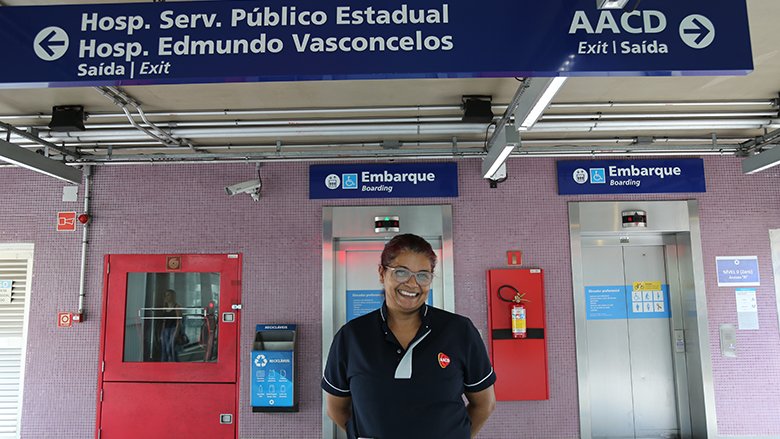Arriving late to work because the train, subway, or bus is delayed can make the difference between a smooth workday and one filled with complications. Spending over two hours commuting every day can have a similar impact. A lack of access to efficient, high-quality public transport affects more than just quality of life—it directly influences the professional success and income of people with fewer resources, many of whom rely on daily work to make ends meet.
“If this metro line didn’t exist, living where I do, I wouldn’t be able to work at this hospital. It would be completely out of reach, and I’d never get here on time,” says Simone da Conceição, a cleaner at a hospital in São Paulo. The expansion of services, which began in 2010, connected new neighborhoods and improved integration with the broader urban transport network. “With the metro, traveling has become much faster and more comfortable,” she adds.
Simone da Conceição at the metro station near the AACD and Servidor hospitals in São Paulo Photo: Mariana Ceratti / World Bank
Simone’s story reflects the reality of millions across Brazil and Latin America: efficient public transport systems can be decisive in accepting a new job, finding work, or improving employment conditions. They can also determine whether a person arrives on time or late to work—putting job stability at risk.
Roughly 58 percent of passengers on São Paulo’s metro Line 5 are from low-income households, with around 750,000 people using the line each day. World Bank projects aim to promote the inclusion of underserved communities. In Rio de Janeiro, for example, 89 percent of beneficiaries of the upgraded urban rail system come from low-income households.
Argentina, Brazil, Chile, Colombia, Ecuador, Mexico, Peru, and Uruguay are among the countries where the World Bank has helped strengthen public transport systems—reducing dependence on private vehicles and improving access to essential services. In these eight countries, more than US$3.5 billion in investments have been made, including over US$1.5 billion in metro systems and US$1.6 billion in urban rail development.




